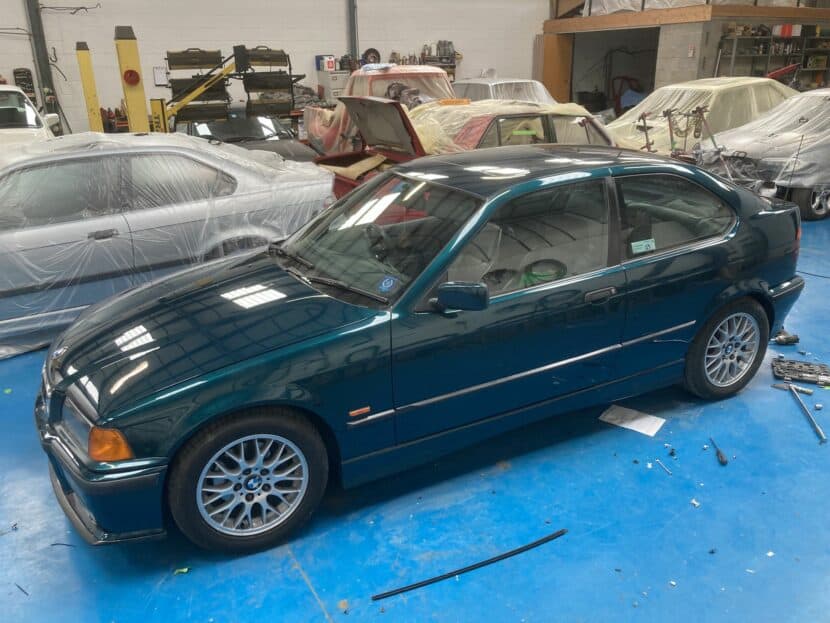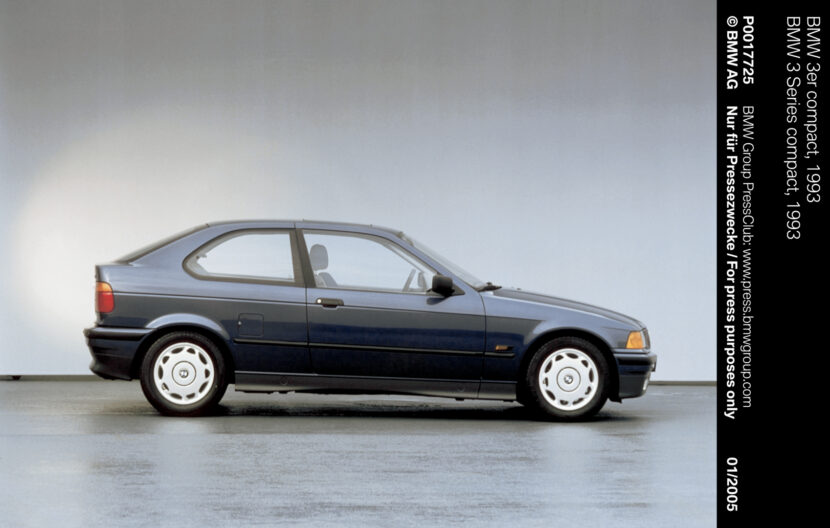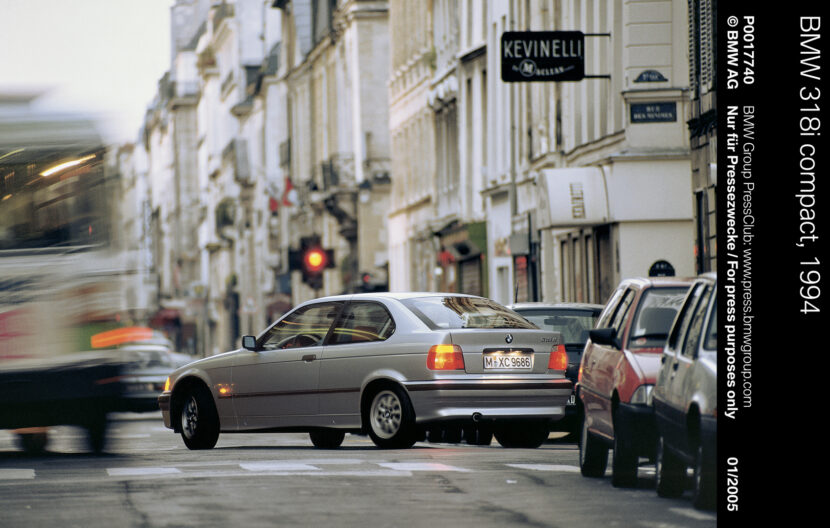If I still own it after seven years, I’m planning on taking my 1994 BMW 318Ti Compact back to the Munich plant it emerged from in September of that year. As such, it’s thought to be the oldest E36 Compact on the road in the UK. The build data shows ‘Special Dealer Preparation’.
The History of the BMW 318Ti Compact
The Compact was launched in the UK on the 12th of October, which is the same date my Boston Green 318Ti Compact was registered. The specifications were fairly minimal: electric windows, power steering, central locking, and BMW had started fitting a radio by that point. This specific model had sports suspension, sport seats with funky side bolsters, and what was called the Lux package, including an electric sunroof, fog lights, and alloy wheels.
How the BMW 318Ti Compact Was Designed

The Compact was designed to fill a gap in the BMW range, although it ended up exactly where the old two-door E30 318i and 318i had once been. The E36 3 Series represented a significant leap forward in size and price, and the Compact served a nice little niche. It’s a shame that BMW’s approach to sports cars wasn’t as successful. While Miata MX5s and its Fiat 124 Spider variant are prevalent, the oddly wide, bloated, and expensive BMW Z4 is rarely seen.
The Compact cleverly combined old and new elements. Its floorpan and front end were taken directly from the E36 sedan, yet it used unique headlights for some reason. Retaining the same wheelbase as the regular E36, BMW introduced a new version of the semi-trailing arm suspension. Though it shared some similarities with the old E30 3 Series, it had distinct features such as five-stud wheel hubs and an E30-style final drive with E36 internals. Every component was subtly different – the axle beam, trailing arms, wheel bearings, bushes, and more. Interestingly, the semi-trailing arm rear suspension was still used in the 1994 E34 5 Series. BMW’s foresight is evident, as the Z3 that arrived a year later was designed around the Compact floorpan.
Technically, there were no reasons preventing the Compact from using the excellent Z axle from the sedan. The official explanation revolved around boot space, but the E36 Touring utilized a Z axle while maintaining a flat boot floor. The real reason was likely cost cutting.
Cost-cutting extended to the interior as well. While the Compact’s interior surpassed that of VW or Opel, it didn’t quite match the refinement of other BMW models. It exhibited what could be called the “Volvo Effect.” The interiors of older Volvo models like the 240 and 740 were finished with a similar textured plastic as the Compact. Despite not having particularly alluring interiors, Volvos tended to outlast many other vehicles.
The Performance of the BMW 318Ti Compact

In 1994, the Compact was introduced in two versions: the 100 bhp 1.6-liter 316i with rear drum brakes, and the 138 bhp 318Ti with the twin-cam 16-valve M42 engine, rear disc brakes, and slightly sportier suspension. In terms of pricing, they competed with more luxurious Ford Escorts, the Opel Astra Mark 3, the Mark 3 Golf, and higher-quality Japanese cars. Notably, the Peugeot 306 and the Toyota Corolla E100 stood out in this class.
The Compact entered the market as a solid and well-finished car that drove adequately, if not exceptionally. The 316i was rather ordinary, while the 318Ti provided a bit more excitement. The car had its flaws, such as the annoyance of screen wash splashing in when using the wash wipe with the driver’s window open. While BMW’s reputation played a role in the Compact’s appeal, savvy BMW salespeople emphasized the true cost of ownership, factoring in both purchase price and resale value. With high demand and slow depreciation, the well-optioned Compact proved to be cheaper to own than a Ford over three years.
Over five years, the Compact lost its competitive edge as newer designs emerged. The Audi A3, vastly improved Golf Mark 4, Ford Focus, and others outshone it. These companies realized that settling for “good enough” was no longer sufficient.
Could BMW have put more effort into the Compact? Gradual improvements were made. The 1.6-liter engine was replaced by a 1.9-liter 316i using the E46 316i engine. It delivered the same 100 bhp but with impressive low-end and mid-range torque. Many preferred it as a daily driver over the Ti model, which required more aggressive driving. The 1.8-liter M42, like mine, could often feel sluggish. The 1995 1.9-liter Ti with the M44 engine was an improvement, but the 323Ti with the 170 bhp 2.5 M52 engine was likely quite lively. Unfortunately, Brits were denied the 323Ti, officially to prevent it from cannibalizing sales from the 323i Coupe.
The BMW 318Ti Compact: A Car Ahead of Its Time?
The BMW 3 Series Compact Ti could have been more appealing to enthusiasts at minimal cost: an additional 10 bhp, Bilstein Avus suspension like the 328i Sport, the 2.7 steering rack from the Z3, and that car’s short shifter. This setup would have made the Compact Ti handle just as well as the legendary E30 M3. In fact, I performed all of these modifications on mine within a day’s worth of work.
Nearly 30 years later, the Compact has been succeeded by a front-wheel-drive BMW. Everyone has their preferences, but that type of car seems more fitting for VW. It’s like a battery-powered Rolex or Walmart jeans with an Armani logo. Perhaps I’m being too critical…







































































